How the steering system works
The Video Course teaches you everything about modern cars.
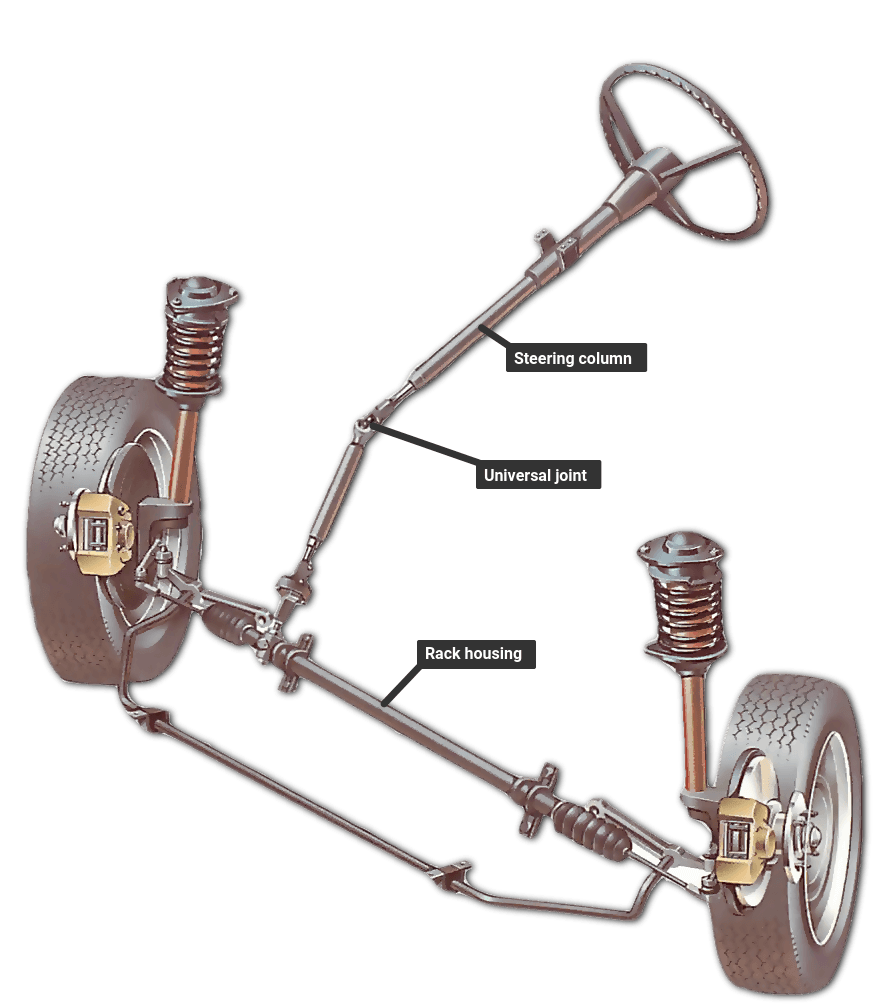
The steering system converts the rotation of the steering wheel into a swivelling movement of the road wheels in such a way that the steering-wheel rim turns a long way to move the road wheels a short way.
The system allows a driver to use only light forces to steer a heavy car. The rim of a 15 in. (380 mm) diameter steering wheel moving four turns from full left lock to full right lock travels nearly 16 ft (5 m), while the edge of a road wheel moves a distance of only slightly more than 12 in. (300 mm). If the driver swivelled the road wheel directly, he or she would have to push nearly 16 times as hard.
The steering effort passes to the wheels through a system of pivoted joints. These are designed to allow the wheels to move up and down with the suspension without changing the steering angle.
They also ensure that when cornering, the inner front wheel - which has to travel round a tighter curve than the outer one - becomes more sharply angled.
The joints must be adjusted very precisely, and even a little looseness in them makes the steering dangerously sloppy and inaccurate.
There are two steering systems in common use - the rack and pinion and the steering box.
On large cars, either system may be power assisted to reduce further the effort needed to move it, especially when the car is moving slowly.
The rack-and-pinion system
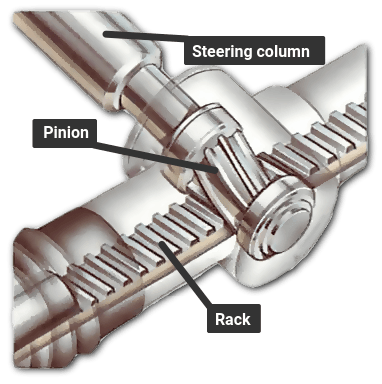
At the base of the steering column there is a small pinion ( gear wheel) inside a housing. Its teeth mesh with a straight row of teeth on a rack - a long transverse bar.
Turning the pinion makes the rack move from side to side. The ends of the rack are coupled to the road wheels by track rods.
This system is simple, with few moving parts to become worn or displaced, so its action is precise.
A universal joint in the steering column allows it to connect with the rack without angling the steering wheel awkwardly sideways.
The steering-box system
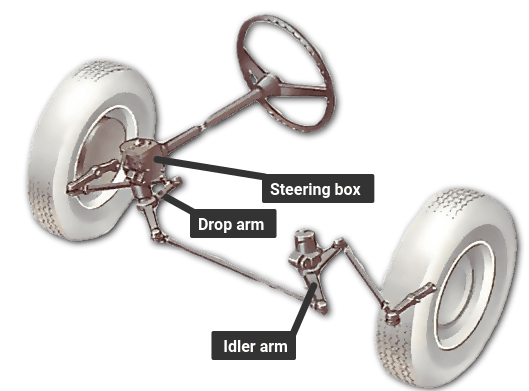
At the base of the steering column there is a worm gear inside a box. A worm is a threaded cylinder like a short bolt. Imagine turning a bolt which holding a nut on it; the nut would move along the bolt. In the same way, turning the worm moves anything fitted into its thread.
Depending on the design, the moving part may be a sector (like a slice of a gear wheel), a peg or a roller connected to a fork, or a large nut.
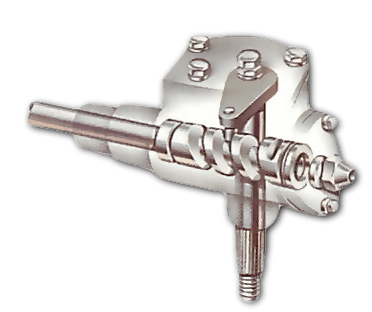
The nut system has hardened balls running inside the thread between the worm and the nut. As the nut moves, the balls roll out into a tube that takes them back to the start; it is called a recirculating-ball system.
The worm moves a drop arm linked by a track rod to a steering arm that moves the nearest front wheel.
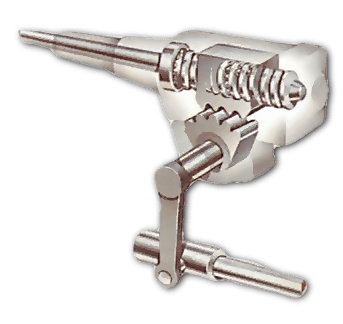
A central track rod reaches to the other side of the car, where it is linked to the other front wheel by another track rod and steering arm. A pivoted idler arm holds the far end of the central track rod level. Arm layouts vary.
The steering-box system has many moving parts, so is less precise than the rack system, there being more room for wear and displacement .
Power-assisted steering
On a heavy car, either the steering is heavy or it is inconveniently low geared - the steering wheel requiring many turns from lock to lock.
Heavy gearing can be troublesome when parking in confined spaces. Power-assisted steering overcomes the problem. The engine drives a pump that supplies oil under high pressure to the rack or the steering box.
Valves in the steering rack or box open whenever the driver turns the wheel, allowing oil into the cylinder. The oil works a piston that helps to push the steering in the appropriate direction.
As soon as the driver stops turning the wheel, the valve shuts and the pushing action of the piston stops.
The power only assists the steering - the steering wheel is still linked to the road wheels in the usual way.
The Ultimate Car Mechanics video course
Learn everything about modern cars from our new video series.
Learn more >-
We build a Mazda MX5 Miata from scratch
We start by tearing down and then rebuilding the whole car.
-
Every part explained
There's ridiculous detail on every part. Clearly and easily explained.
-
All modeled in 3D
We've created the most detailed 3D model ever produced so we can show you everything working.






